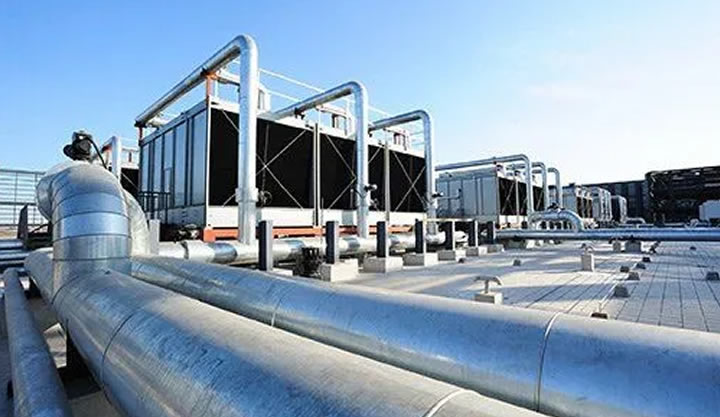A slurry pipeline works by mixing together a solid material like ore and a liquid to form a suspension or slurry that can travel through the pipeline.
The slurry is pumped through the pipeline using pumps or other pressurized systems, and the pressure of the fluid helps keep its suspension intact. The pressure also moves it along the pipe, allowing it to reach its destination.
Depending on what is being transported, different solids may be mixed with different liquids to create an optimal mixture for transport. Slurries are commonly used in applications such as mining, oil and gas production, wastewater treatment, and more.
Additionally, depending on the specific application, pipelines may feature special coatings or liners to reduce corrosion or wear from the materials being transported.
Components of a Slurry Pipeline
Slurry pipelines are a cost-effective and efficient way of transporting thick mixtures over long distances.
The two main components of the pipeline system are pumps and pipelines. Pumps are used to push the slurry through the pipeline, while the pipeline contains several important parts that help transport and control the flow of materials.
The first component is a filter or screen which helps remove any particles that may be suspended in the mixture so it does not block or damage other parts of the system.
Valves are also installed along the pipe to control and regulate flow as needed, helping to avoid pressure drops or surges in certain areas. Additionally, bends and tees can be added to redirect material flows as desired while still maintaining an even pressure throughout.
Finally, a lining is applied on both sides to protect against abrasion, corrosion, and leakage from outside sources such as water or air infiltration.
These components work together to ensure the effective transportation of slurry materials over long distances with minimal wear on equipment or loss in efficiency due to clogging or buildup within pipes.

Polyurethane lined steel pipes are used in various applications where there is a need for a combination of strength, durability, and chemical resistance. They are used in oil, gas, mining, and chemical industries, water and wastewater treatment, power generation, etc.
Design Considerations for a Slurry Pipeline
Slurry pipelines are commonly used to transport abrasive slurries, such as those found in mining and chemical production processes. These pipelines need to be designed with careful consideration given to the characteristics of the slurry being transported.
Depending on the flow rate and composition of the slurry, a variety of design parameters must be taken into account. For instance, if the fluid flow is too high it can create excessive head loss due to friction caused by turbulent flow, which will reduce its efficiency.
Pipeline materials must be selected according to their corrosion resistance and ability to withstand abrasion from particles in the slurry. Special attention should also be paid to pipe joints and valves because they are prone to wear due to erosive forces from particles moving through them.
Lastly, if there is a risk of cavitation or erosion due to high velocities within the pipeline, then protective measures such as pressure relief valves or acoustically lined piping may need to be utilized.
By taking into account all these considerations during the design phase, a successful and efficient slurry pipeline system can be achieved.
Conclusion: Advantages & Challenges
The advantages of a slurry pipeline are numerous and include cost savings, reduced environmental impacts, increased safety, and improved reliability. The cost savings come from not having to use trucks to transport the slurry over long distances.
This reduces wear and tear on roads, which can lead to more reliable operations. Additionally, reducing the number of vehicles needed for transportation helps reduce air pollution and greenhouse gas emissions that have a negative impact on our environment.
In terms of safety, pipelines are inherently safer than trucking since they do not require drivers or operators and there is less risk of accidents or spills occurring.
Finally, the reliability of pipelines is higher since they are typically constructed underground with fewer risks associated with them when compared to surface-level transportation systems such as trucking.
On the other hand, pipelines also have their share of challenges such as costs associated with constructing and operating them.
Additionally, there is an inherent risk associated with any type of transportation system in terms that accidents may occur which can cause serious damage to ecosystems or even human lives if proper precautions are not taken when handling hazardous materials such as crude oil or hydrogen sulfide gas so precautions need to be taken when considering this form of transport for these materials.

